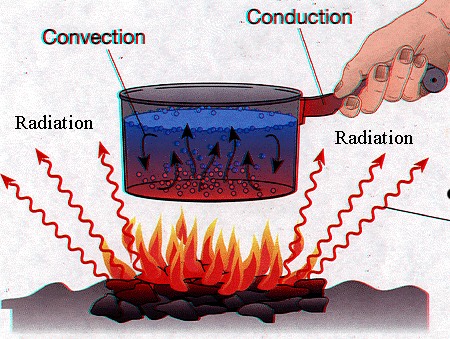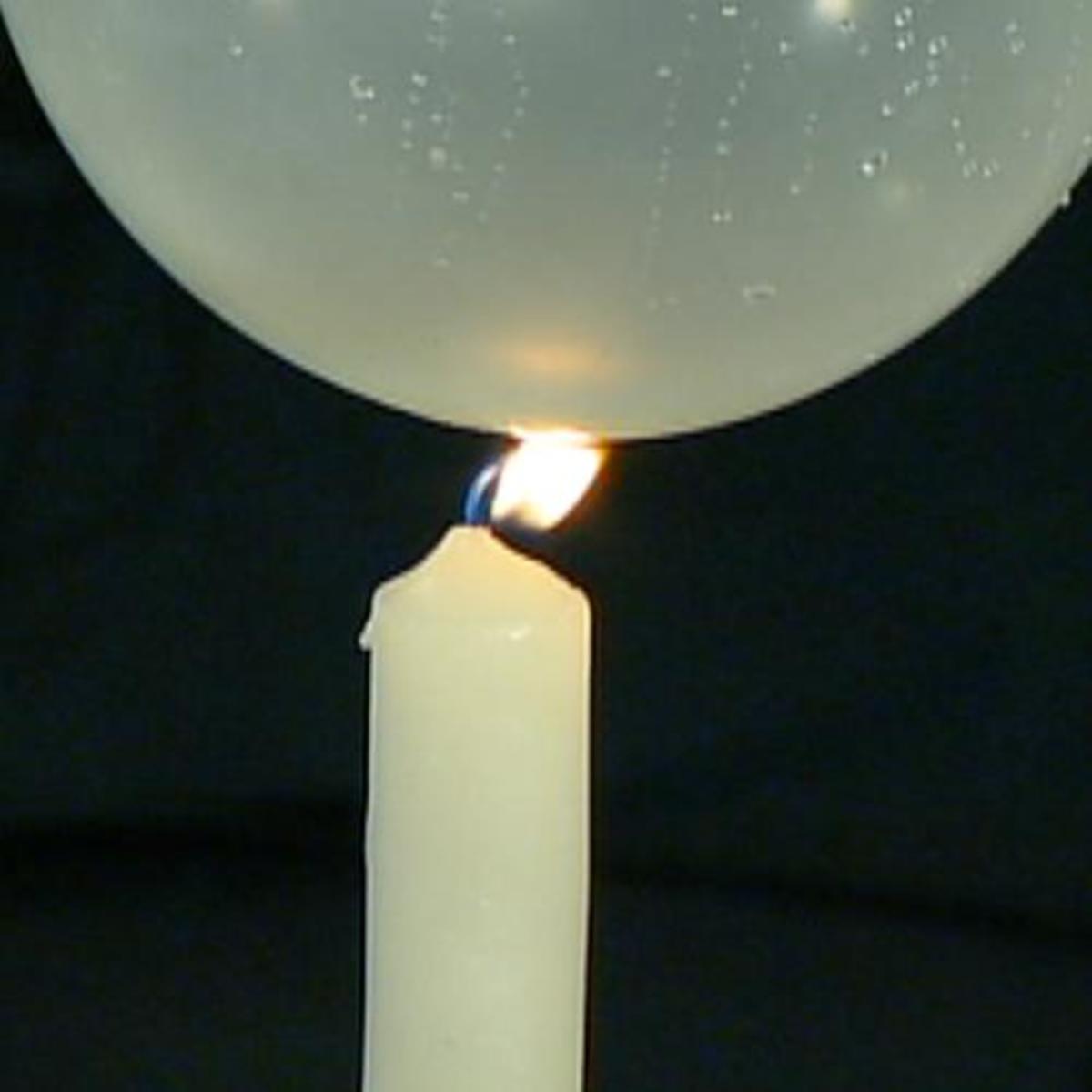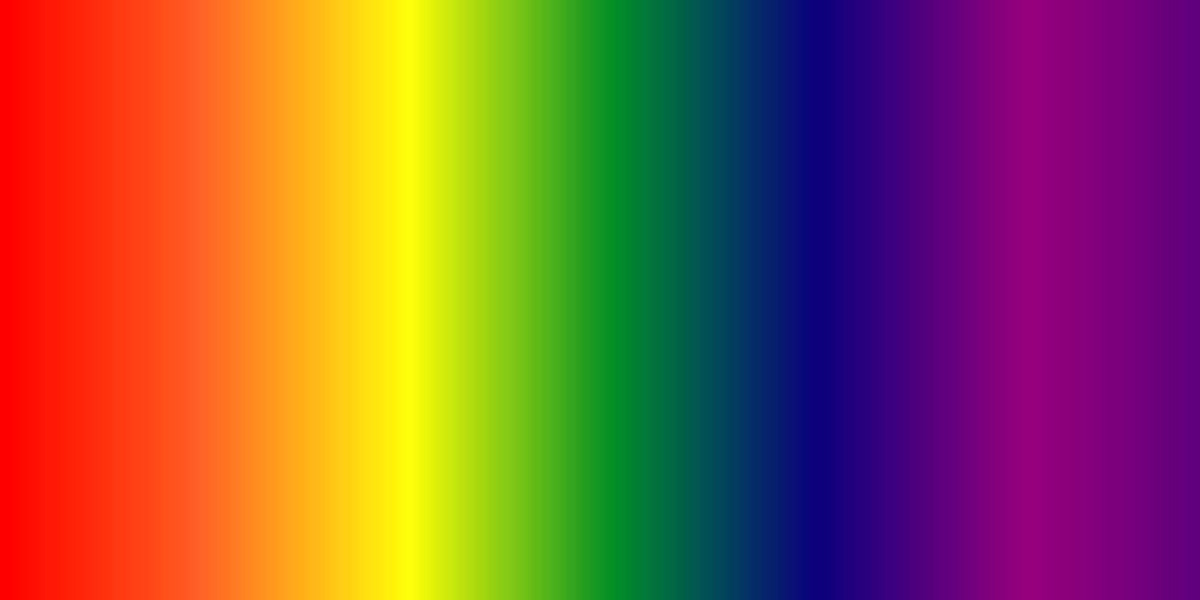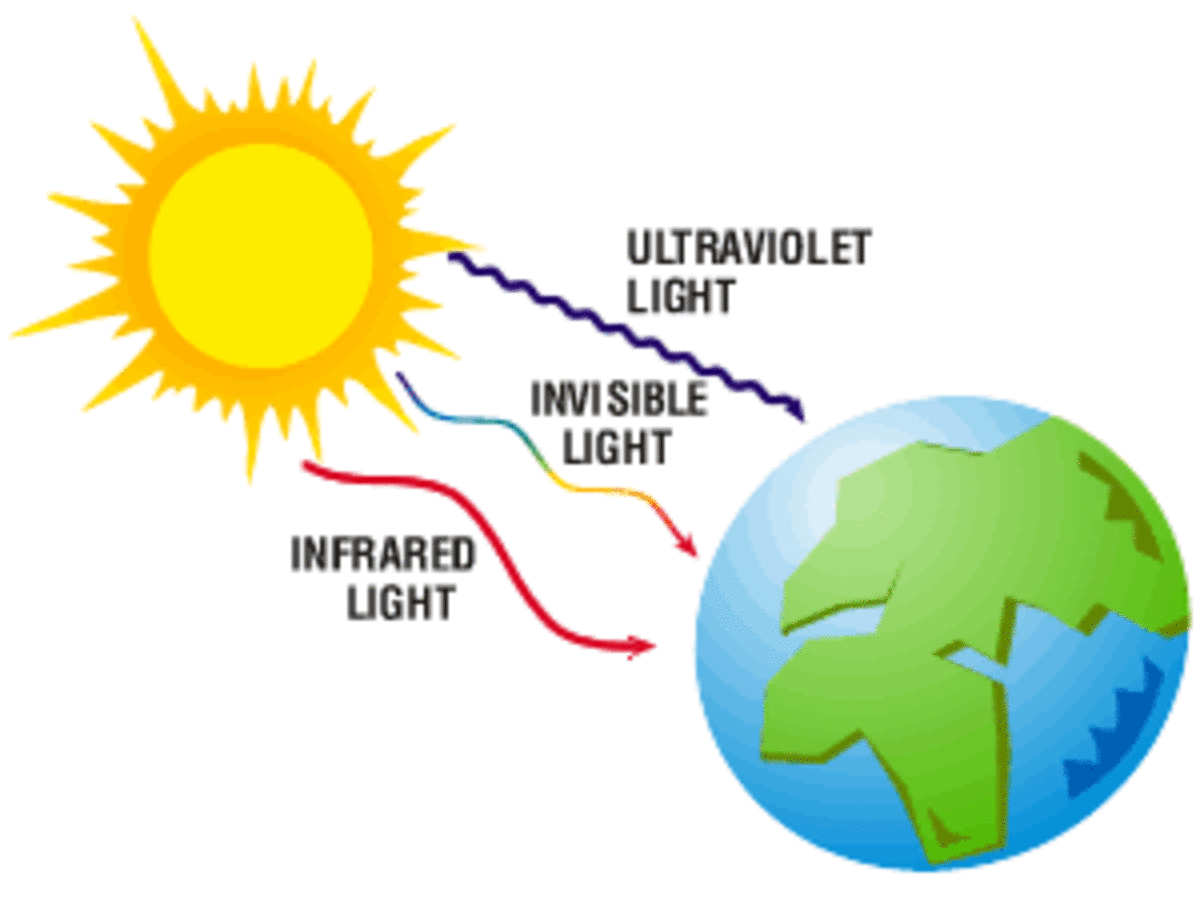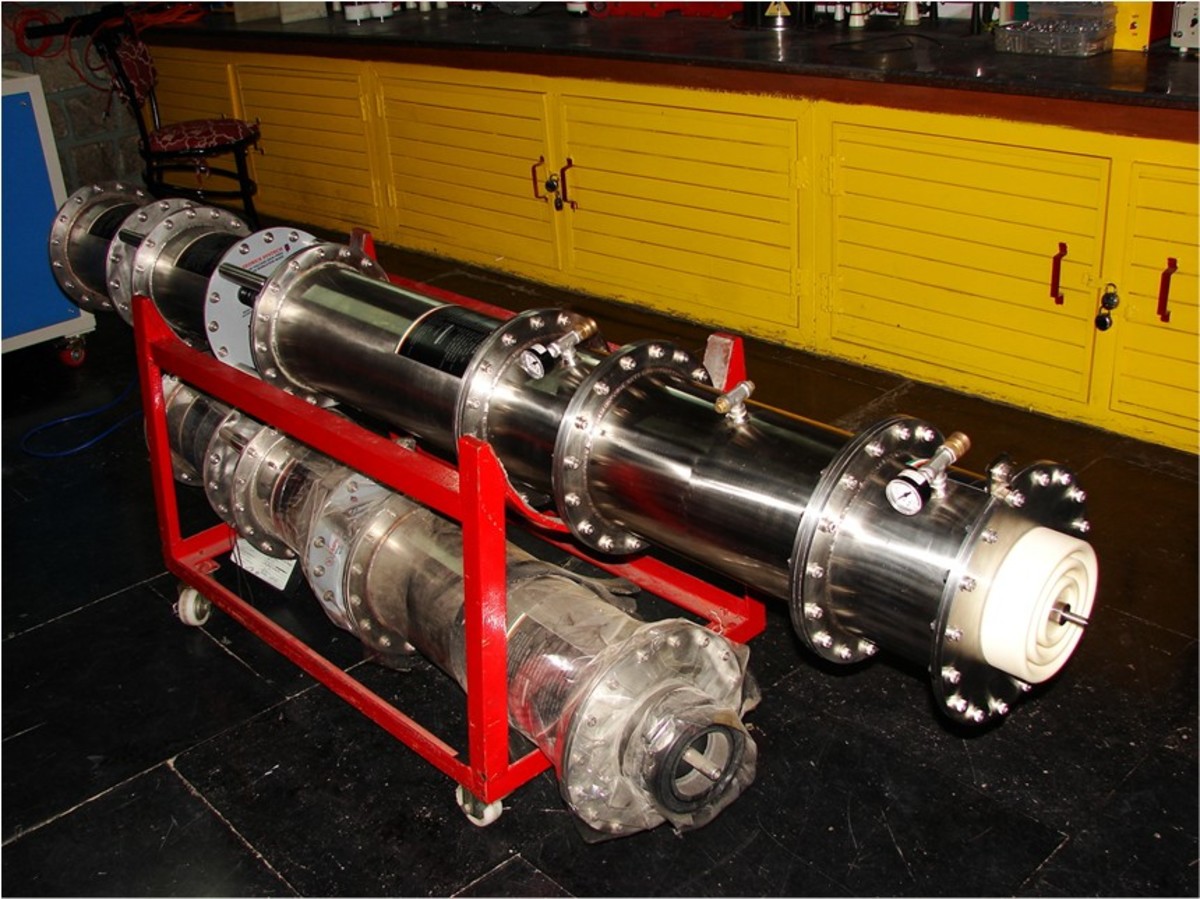Heat Transfer
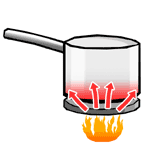
Conduction
Conduction is the mechanical transfer of heat through matter from a warm part to a cooler one without any bulk motion.
- In gases and liquids, heat conduction occurs due to collisions and diffusion of molecules during their random motion.
- In solids, molecules conduct heat by vibrating against each other OR when free electrons carry kinetic energy from one atom to another.
- The best conductor of heat is metal.
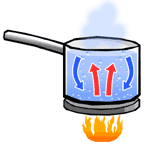
Convection Currents
Convection currents transfer heat through liquids and gases.
- In gases and liquids, convection currents occur due to ‘bulk fluid motion’. For instance, hot water in a sauce pan will carry heat into a higher, towards the surface, before cooling a sinking. Eventually heat will travel to all the water in the pan and the water will boil.
- Convection currents cannot take place in solids as there has to be fluid motion. - The molecules of a substance should be free to move like liquids and gases.
- Any gas or liquid is good at producing convection currents.
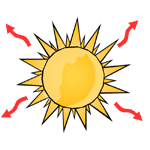
Electromagnetic Radiation
Electromagnetic radiation is the transfer of heat from one object to another via radiation.
- For instance, sunlight radiation heats the Earth by making molecules in the Earth’s atmosphere and surface vibrate.
- Electromagnetic waves are produced by the motion of electrically charged particles. These waves are also called "electromagnetic radiation" because they radiate from the electrically charged particles. They travel through empty space as well as through air and other substances.
- Do you listen to the radio, watch TV, or use a microwave oven? All these devices make use of electromagnetic waves. Radio waves, microwaves, visible light, and x rays are all examples of electromagnetic waves that differ from each other in wavelength.
Conduction, Convection Currents and Electromagnetic Radiation
To help with the understanding of all these methods of heat transfer, I will use the sauce pan analogy again. The picture below clearly points out the:
CONDUCTION - Heating of the metal pan.
CONVECTION CURRENTS - The heated water rising and cold water lowering.
ELECTROMAGNETIC RADIATION - Released from the fire.
